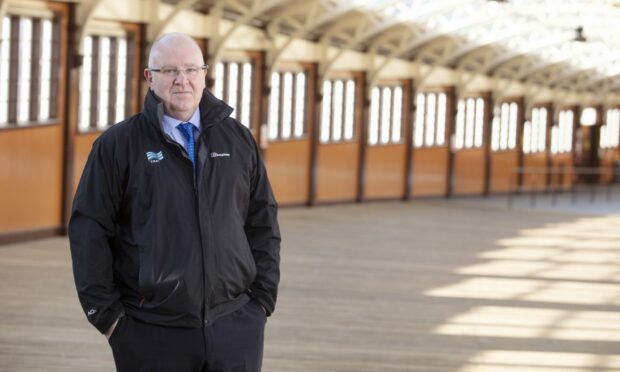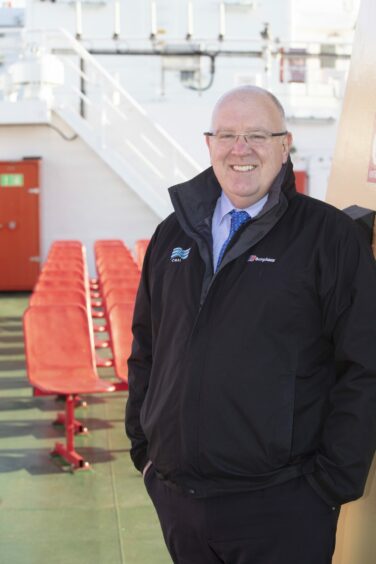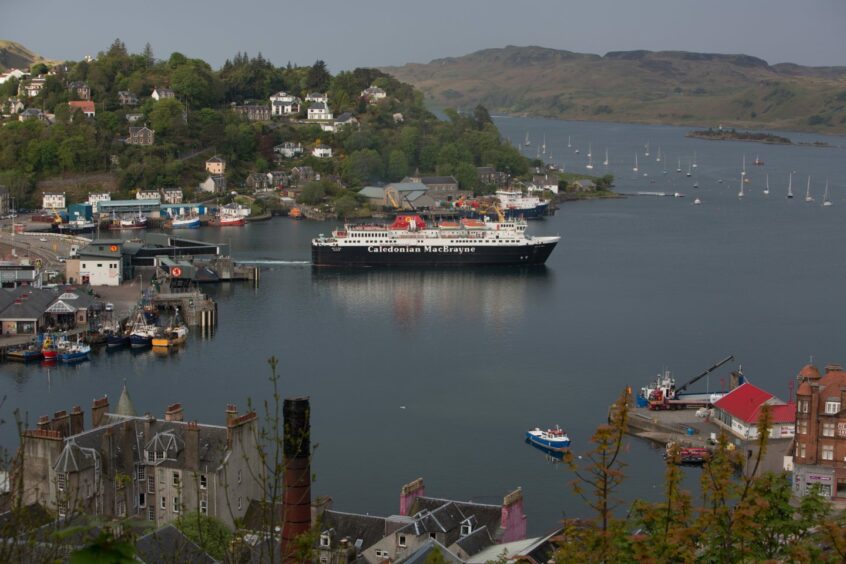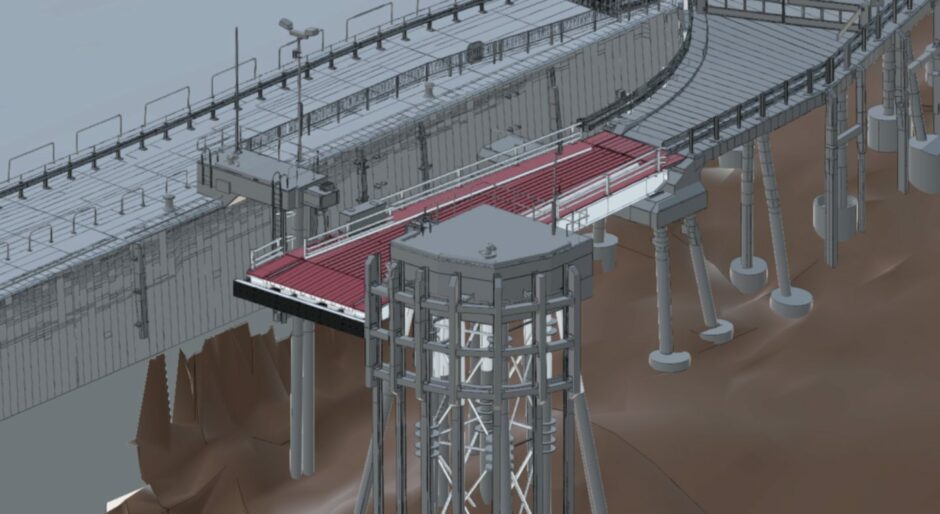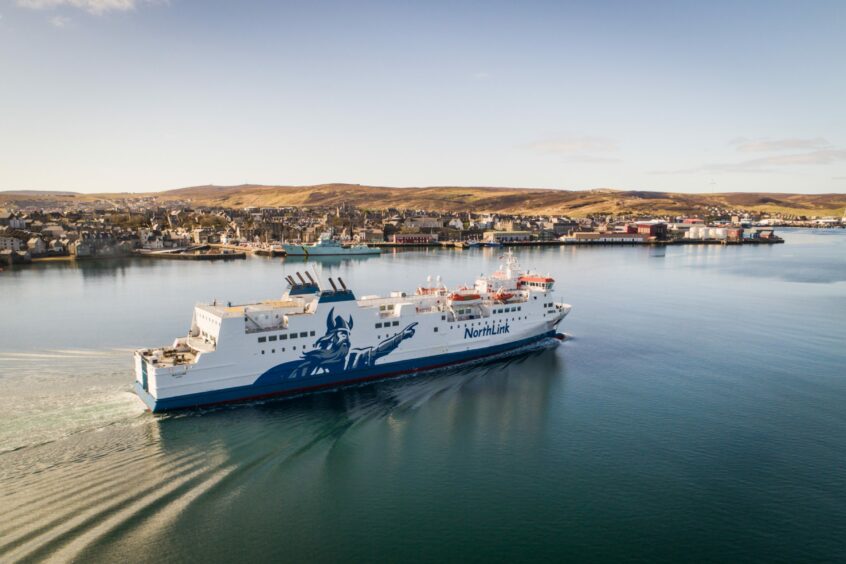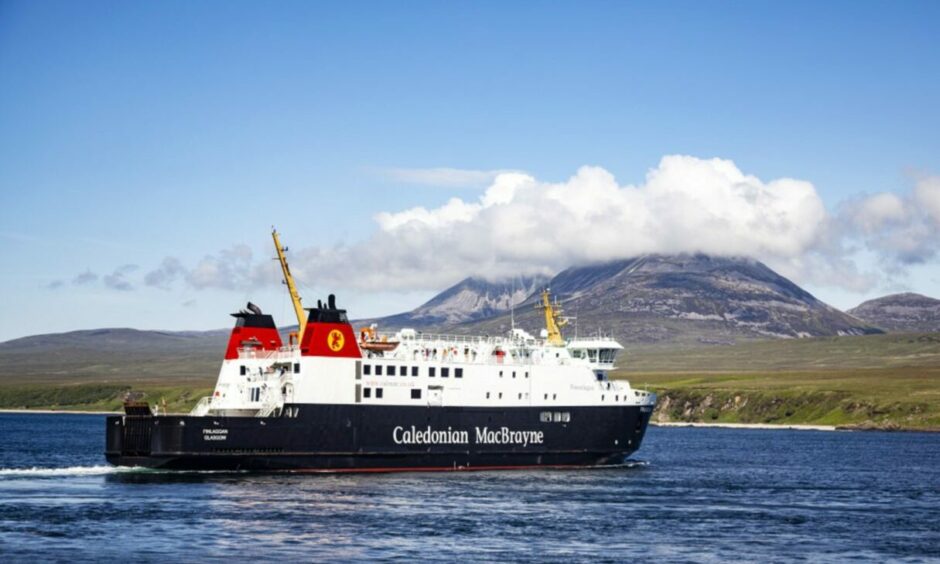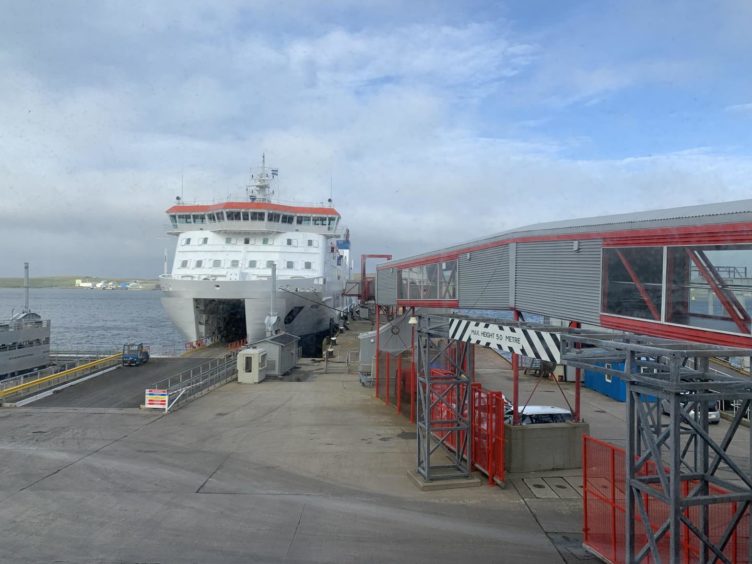A lack of Scottish Government investment in ferries since the turn of the century has led to an ageing fleet that struggles to serve the Wetern Isles communities it is meant to serve.
However, Kevin Hobbs, chief executive of Caledonian Maritime Assets Limited (Cmal), the government agency which owns the CalMac ferries, believes the promise of £120million of annual funding until 2026 can lead to a better future for islanders.
In an exclusive interview, Mr Hobbs there was no option but to fix years of underfunding for the Clyde and Hebridean and Northern Isles ferries.
While he believes it may take until 2030 for the agency to be in a position of operating the service with a fleet of boats all under the optimum age of 15 years, he believes the promise of government cash can make it happen.
Within 10 years Mr Hobbs said the fleet will be more flexible, making it able to meet demands and pressures on the network.
‘Ferry renewal has not kept up’
Cmal owns 36 ferries with 31 vessels are leased to CalMac Ferries Ltd on routes to the islands and peninsulas of the west of Scotland. Five vessels are leased to Serco Northlink Ferries for Orkney and Shetland routes.
Mr Hobbs, who has been at the helm of Cmal for six years, said, any extra funding to come into company from government would be spent on making further port and slipway improvements, and making sure more ferries are brought onto the route.
He said: “If you go back to turn of the century the frequency of [ferry] renewal has not kept up.
“One and a half ferries need to be replaced every single year to keep the fleet at the optimum functioning rate of under 15 years old. At the moment the average age of ferry is 24.” The oldest ferry is the MV Isle of Cumbrae built in 1977.
“A number of people have been scratching their heads about why this has never happened,” he continued.
“As you know, funding comes from government, and while I am loathed to expand on it, I would say the money has not come through to us.”
Mr Hobbs said if Cmal were to be taking “mortgages” out for boats from private companies things might be different, but as a Scottish Government-owned company the money for new vessels must come from them.
He continued: “That means the process is slower than it should have been.
“But when you are looking at government priorities it is difficult to see how it could have been different.
What new ferries are in pipeline?
The government-owned lifeline ferry service on the west coast is operated by CalMac, and Northlink operate the service to Orkney and Shetland.
Five boats are in the pipeline:
- Loch Freesa – for the Mull route – due to come into service by summer, currently being refitted in Leith.
- Two boats – for routes to Arran and Uist due next year, albeit hugely delayed, from Ferguson’s.
- Two Islay-bound vessels commissioned from boat builders in Turkey.
On the cards, are a total of 21 vessels in the next 10 years including:
- Two new freight ferries for the Northern Isles.
- Three passenger-only ferries for Gourock, Dunoon and Kilcreggan.
- Six major vessels, two of which are already in the design stage.
- Altogether 10 small vessels to serve the network.
‘Limited funds available’
Saying there was a limited amount available for major projects, he pointed to major infrastructure and transport projects “such as the Queensferry Crossing, the trams system [in Edinburgh] and of course before that the Holyrood building”.
He added: “It is for the government to prioritise how it will spend its money.”
“And it has consequences. These vessels are working in an aggressive environment [and each of the years the ferry ages] they are less resilient and reliant.
“One of the things I have been promising is an annualised budget, so that we know what we have to spend.”
Pointing to the Scottish Government’s Infrastructure Investment Plan published in February 2021, he said he now knew what funding was coming to Cmal.
He said: “£580million is much welcomed investment over 10 years. The run rate in Cmal before this was £40million per year.
“So far we have close to £600million, that accounts for 40% of what we need. We need another 60% and we will deliver what is required.
“But, before 2030 it should get better.
“We have the vision, the drive and the backing of Transport Scotland. We have to fix this. Otherwise this is the never-ending story.
“For us to get £120 million per year is a significant uplift which will start to remedy and improve the network.”
Can piers be passed to communities?
Cmal is the Statutory Harbour Authority and owner of 16 ports and harbours in the Firth of Clyde and around the Hebrides, and owns and leases properties and port infrastructure at 10 other locations within these areas. It has ferries operating in 53 ports throughout Scotland and the isles.
Asked if piers should be put into the hands of the communities, Mr Hobbs said: “That is controversial. We look at what we can achieve. When it comes to piers and slipways we know we can deliver on time and on price.
“While communities and local authorities can struggle to find find funding and expertise that is our whole raison d’etre.
“The councils have good people but they have pressures on their time and due to the nature of their work, they have a broad scope, lifeline ferries are not their uppermost priority, but it is ours.
“Our 100% focus has been, and is, ferries and port infrastructure.”
Ministers know need to address delays in ferry infrastructure
A Transport Scotland spokesman said the minister for transport had urged both CalMac and Cmal to source additional ferries for the network.
He said: “Operators are best-placed to balance the needs of communities across the network – ensuring island connectivity is maintained, while meeting legal requirements for vessels.”
He continued: “Ministers recognise that having confidence in ferry services can impact upon people’s decision on whether to live and work on the islands, and impacts upon the sustainability of the island communities themselves.
“These human impacts are at the heart of Scottish ministers’ commitment to supporting lifeline services through continued investment in ferry services across Scotland.
“Ministers also fully recognise the need to address delays in investment in ferry infrastructure which is why they have committed to the £580 million in the Infrastructure Investment Plan.”
